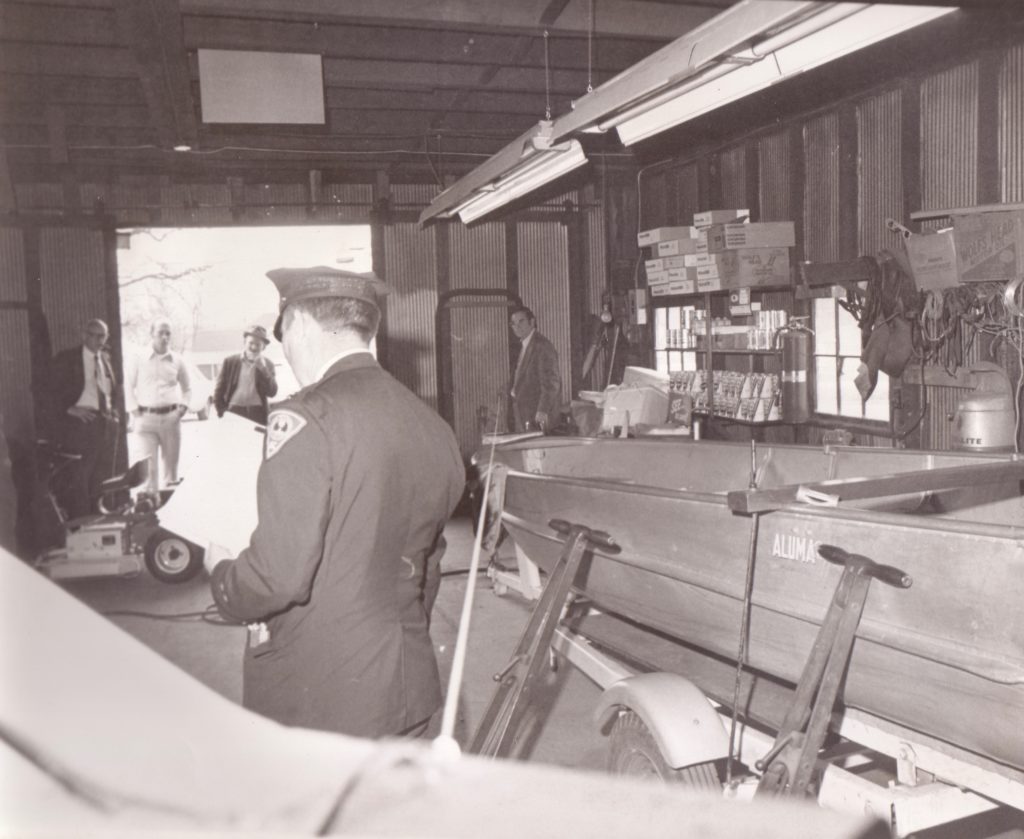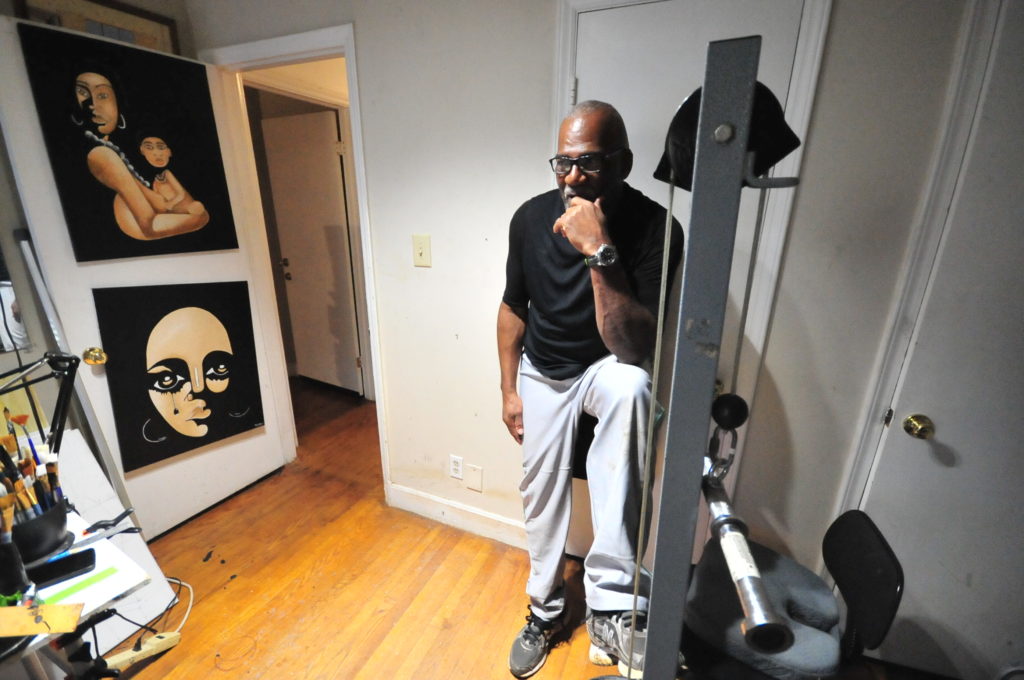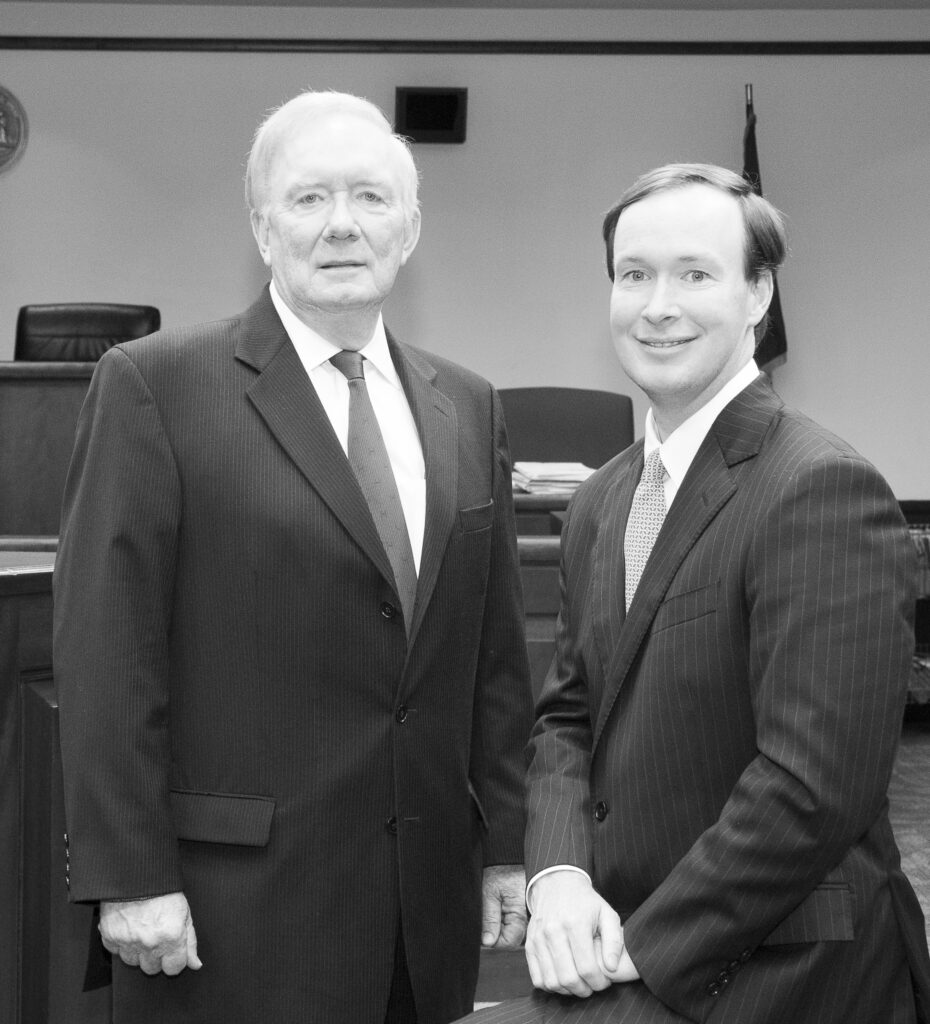Subscribe on Apple Podcasts or click here for other listening options.
Vera Looper stood in the middle of her gravel driveway, oblivious to the blue sky and stiff breeze. She didn’t revel in the fact that there had been snow on the ground just days earlier or that the rest of Greenville, South Carolina was about to enjoy one of the warmest January days anyone could remember. Vera did nothing but wave her arms in the air and scream to anyone who would listen.
“My son! My son! Help my son!” she pleaded. She repeated it over and over, helpless, alone, and wrapped in a kind of panic only a mother can feel.
It was just before 2pm on Friday, January 31, 1975, and Vera Looper had just been the first witness to a crime that would shake and confuse the Greenville community for nearly half a century.

It hadn’t been but a couple of hours since she’d been in her little kitchen at 1190 Pendleton Street. It was familiar in every way. The little table with simple salt and pepper shakers. The container of Morton’s Salt next to them. The white coil-burner stove with the stainless steel burner cover on top. The clean linoleum and the space near the sink where a piece of white quarter-round had come loose from the baseboard. The wall phone and its long spiraled cord. And the flowered drapes covering the window that looked out over the trimmed shrubs, over her driveway, and all the way to her husband Rufus’ garage.
Looper’s Garage is where Rufus F. Looper, Jr. spent his days. He would rise at daybreak and do car inspections for customers. He would fix what could be fixed for the people drawn in by the Looper’s Garage sign hung from an archway of plumbing at the roadside. The sign promised tune-ups, expert brake service, mufflers, tail pipes, and shock absorbers. In big letters at the bottom, Looper had included “We build engines.” He was a simple man who was good with his hands and quick to give a handout where he thought it was needed. Vera found him predictable, and at that point in their lives—both were 57 with grown children—predictability wasn’t a bad thing.
It was sometime around noon when Rufus walked back across the driveway and into the house for lunch. With their adult son sleeping down the hall, Rufus and Vera sat in the den and ate their meal in front of the TV. They had their choice of programs: Password: All-Stars, The Young and the Restless, or Jackpot. Within a couple hours, no one would remember which show the couple chose.
Vera didn’t look at the clock when Rufus stood up, but she figured it to be sometime between 12:30 and 1:00pm. Instead, she watched him leave. He wasn’t a big man–maybe 5’7” and 160 pounds—but his thick silver and white hair shined in the sunlight. She’d watched him walk across that driveway more times than she could count. He was working on a doctor’s car and aimed to get right back to work.
When Rufus was out of sight, Vera returned to her chores. She cleaned up the lunch dishes from the stove, washed them in the sink next to the window, and left them to dry on the dish rack. The window was just behind her right shoulder, the drapes left open to let in the unseasonably warm January sunshine.
While Vera piddled in the kitchen, something outside the window caught her eye. There was a man standing on Pendleton Street on the edge of the property. It was a busy street where trucks rumbled by every day on the way to the nearby mills. Nevertheless, Vera thought she had seen the same man earlier while she was making lunch. Now he was back and casting an eye toward the house.
Vera was a small woman, and only when her hair was styled high did it reach much above the window’s bottom pane of glass. Still, she looked down the gravel path and thought she was seeing the same man again.
“I saw him come up the street again, and I just wondered what he was doing in that area a second time,” she said later.
When asked later, Vera said she couldn’t see the man’s face, that his hair was under a cap, and that he was dressed in dark clothes. He wasn’t a familiar face, so she stopped her chores to watch the stranger as he walked up her driveway.
“I just wanted to watch and see what he was going to do,” she said.
The man’s stride didn’t slow. He continued to walk. Vera quickly grew nervous, turned, and made for her son Frank’s bedroom. She found him already awake and on the hallway phone with the woman he intended to marry. Vera interrupted the call.
“I seen a black man walk into the drive,” she said.
Greenville was not the safe and tony New South town it would become over the next four decades. The first four weeks of the year had seen 13 homicides, at least one of which targeted an old man who lived not too far away. Vera was worried for her family, and she had good reason to be.
Frank dropped the phone onto its cradle, went to his room, and came out with a .357 revolver shoved underneath his belt. He dropped his shirttail over the gun’s grip and walked casually out the back door toward his father’s shop.
Vera hurried back to the window as Frank walked down the steps, through their fence gate, and into the old metal garage. Just as Frank made it there, the stranger was on his way out. Vera would later recall the man looked almost casual as he walked back toward the street. Then, just as soon as he stepped away, the stranger turned around and walked back in the door of the shop.
Vera stood at the window, waiting and helpless.
Until she stood there at the window in terror, it had been as normal a day as any other in Loopers’ life. In Washington, President Gerald Ford was expanding his push for an energy conservation plan. In New York, the stock market was ending its best January in history, a sign that analysts thought was an indication the recession was ending. It was 78 degrees outside and as close to perfect a day as it could be.
Vera was still at the window when she heard the two gunshots. She barely had time to process the sound before the man in the dark clothes ran out of the garage toward Pendleton Street.
She didn’t see him again because she was already out the door and running for the garage. She called her son’s name.
“Frank! Frank!” She couldn’t find him.
A wood-paneled station wagon—the doctor’s car Rufus was supposed to be fixing—blocked Vera’s view of the rest of the shop. She squeezed past the car and the little metal fishing boat beside it. Rufus had draped a cover over the station wagon’s driver’s side front quarter panel while he leaned over to work on the engine. When Vera made it that far, she looked onto the dirty floor.
“I saw my husband lying there,” she said.
She turned back toward the front of the shop and looked down again. That’s when she saw her son Frank bleeding at her feet.
Vera Looper ran toward the street screaming the news that would dominate one of the most violent and confounding years in the history of Greenville County.

Episode notes:
January 31, 1975 is just slightly more than 30 minutes, a blink in the 44 years that have passed since the murders. In that time, listeners meet the Loopers’ friends and family, the prosecutor who set out to get justice for the murders, and the man convicted and sentenced to death, Charles Wakefield, Jr.
On their own, those people represent the bulk of what the public knows about the case, one investigators consider open and closed. However, as January 31, 1975 continues, it introduces a cast of people from all different walks of life who came to doubt the case, Wakefield’s guilt, and the story law enforcement officials have told for four decades.
Murder, etc. producer Brad Willis is among those people. In 2001, he was a television news reporter and discovered that the South Carolina parole board had agreed to release Wakefield from prison. Willis jumped on the story, and days later, the parole board reversed its decision. In Murder, etc.’s first episode, Willis reckons with his role in the story and explains the years of investigation that followed.
Featured interviews in January 31, 1975
Click on any of the pictures to learn more about the people who will tell Murder, etc.’s story.

Freida Belk (with son, Jay) 
Charles Wakefield 
Billy Wilkins with son, Walt. (Photo: Cindy Landrum)






18 comments on Episode 1: January 31, 1975
Comments are closed.